Giant Armadillos update - The armadillo soap opera
02/02/2018 in Conservation
Greetings from Brazil and happy World Wetlands Day! In case you didn't know, the Pantanal is encompasses the world's largest tropical wetland area. It may only be February but there is already a lot to update you on.
At the end of 2017 project biologist Gabriel Massocato and head veterinarian Danilo Kluyber conducted several successful expeditions and we were delighted to be joined by several guests on these trips including, Karina Meistrup from the Royal Zoological Society of Scotland.
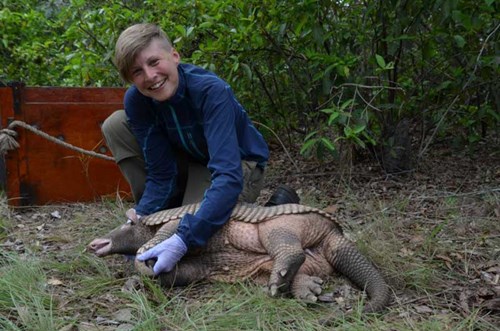
Above: RZSS Edinburgh Zoo keeper Karina Meistrup joined the team for the November expedition.
During these recent expeditions we managed to catch up with many of the giant armadillos that we have been studying. In November we located Mafalda and Renee. Mafalda is gaining weight, and is now approaching the size of an adult armadillo – so we estimate she is around 6 years old. Camera trap footage revealed that Renee had some lesions on her head and back, most likely from an encounter with a predator. Thankfully we managed to capture her and apply treatment. I am sure she would have been fine without our intervention, but she was scheduled to be re-captured for assessment anyway. We saw her again in December, and thankfully she looked in good health on the camera trap footage, she even dug one of the largest burrows we had ever seen. Good job Renee!
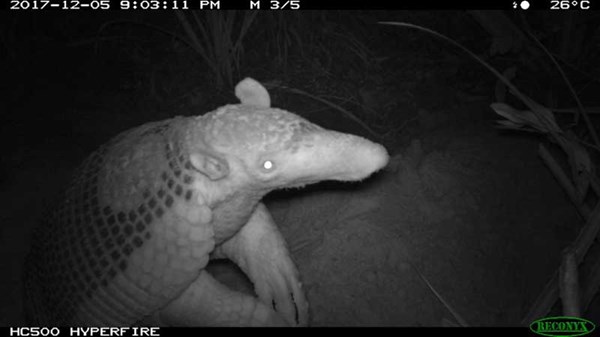
Above: Camera trap image of 'Renne' showing wounds to her head and back.
Below: Giant armadillo 'Tex' emerging from her burrow.
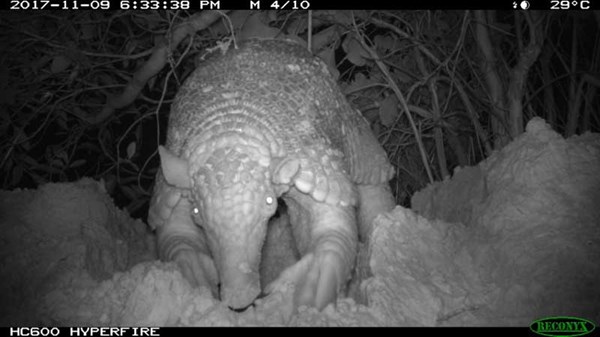
In December we also managed to recapture Tex and refit the GPS device after our issues in October. She gave the team a bit of work as she returned to an area where there were five burrows. The team could tell the burrow she was in due to the fresh sand, but still set two traps. She only came out on the second night and escaped out of another burrow. Tracks we discovered the very next morning revealed that she walked very close to the team as they waited for the alarm on the trap to go off!
These expeditions were not without their low points however, and we are very sad to report the deaths of two of our giant armadillos, Emmeline and Caetano. Emmeline had been unwell for a long time. Even though we had tried to help, her condition never improved following the severe burns sustained almost a year ago. When we last saw her in October she was re-using burrows instead of digging new ones so although this discovery was not a surprise it is still a sad one for the team.
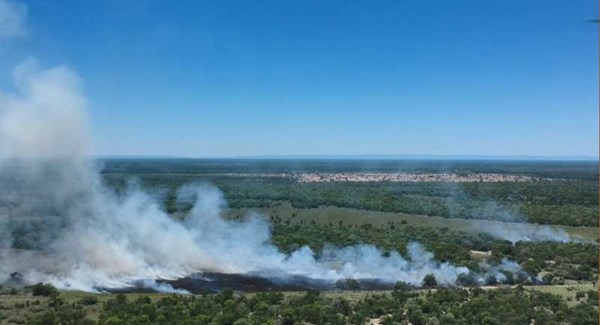
Above: Fire and habitat loss in the Pantanal
Below: Members of the team walking through the burnt landscape
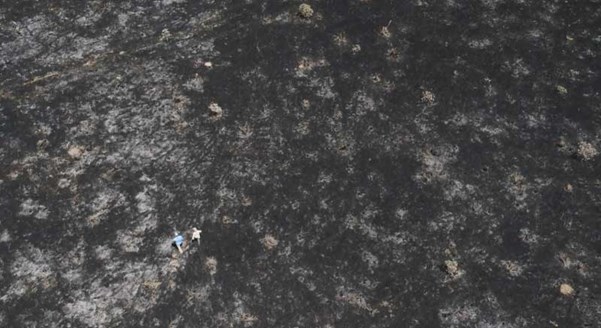
The loss of Caetano is even more disturbing and was unforseen. When we caught him in August he had lost weight and also sustained burns, although not as severe as Emmeline. On a subsequent expedition in October, we then discovered that his home range had been clear-cut and tilled to plant grass. At the time we were encouraged to find him far away and hoped he could go on to establish himself in a new area. Unfortunately, in December we discovered his body in a burrow only 15m away from the deforested area that had once been his home. There is no way of determining with absolute certainty the exact cause of death. He could have sustained injuries from predation, or some other natural cause, but either way we really were not expecting this. When we caught him last year Caetano was a beautiful strong male in his prime. It is truly heartbreaking.
Going back to Emmeline’s story however there is a small positive note. Back in January last year, she was photographed with a 6-8 month old juvenile. Due to floods we were only able to start monitoring Emmeline again in July. We placed cameras for long periods of 30 to 40 days in front of over 20 burrows, but we never managed to get another picture or evidence of this juvenile which we had named Vecchio. In a weird twist of fate, on the last burrow where we left a camera there was a picture of Vecchio. We recognized him instantly from the unmistakable pattern of his scales. We hope to follow his journey during future expeditions.
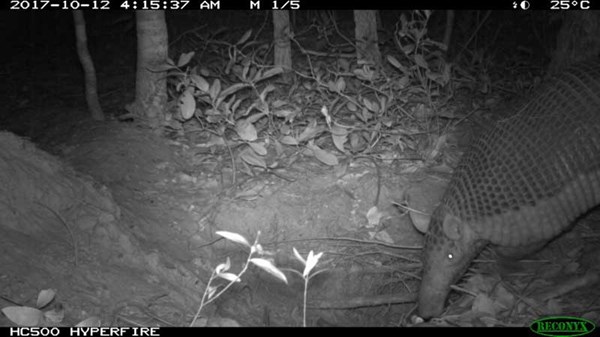
Above: 'Vecchio' makes an appearance on our camera trap footage
In other news. Emanuel continues to give us headaches as he is very hard to find! His home range is huge and we found him 10km away in between expeditions. Avelina and her juvenile were not located, however, tracks of a large and smaller individual were found in her range which is very promising. Isabel and Tim continue to elude us but we are hoping to set out a camera trap grid over the year in her area to attempt to confirm their presence. And finally we found a new adult male whilst searching for Vecchio, who we have since named Richard.
Phew, increasingly I’m tempted to rename these updates the giant armadillo soap opera!
The rainy season started a bit earlier this year and it rained very hard during December. As a result we are not sure exactly when we will be able to conduct our next expedition. We are eager to get back out in the field and catch up with Eric who we suspect might have become an adult reproductive male – if he has it will be another important piece of the jigsaw in understanding these incredible animals. Hopefully we will have more news about this in the coming months.
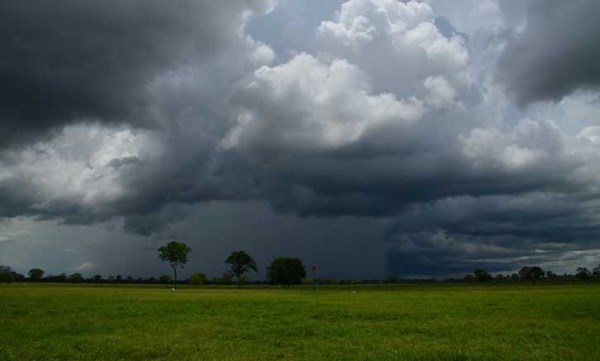
Above: The rains started early in December.
Below: Sunset over the Baia das Pedras Ranch.
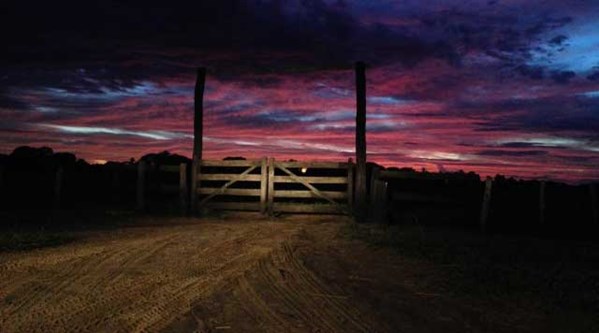
As for the Anteaters & Highways Project we continue with the monitoring and road surveys. We believe that the reflective tape on the collars is working well as, thankfully, so far none of the animals monitored have been involved in a vehicle collision.
Once again, I would like to thank you all so much for supporting our work and I look forward to sharing further updates soon.
All the best from Brazil!
Arnaud
Featured Articles

An update from the Budongo Forest
19/04/2024 in Conservation

Edinburgh Zoo named best zoo in Scotland
15/04/2024 in Edinburgh Zoo

























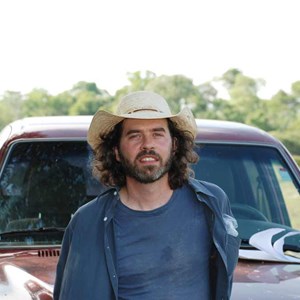
Follow EZ